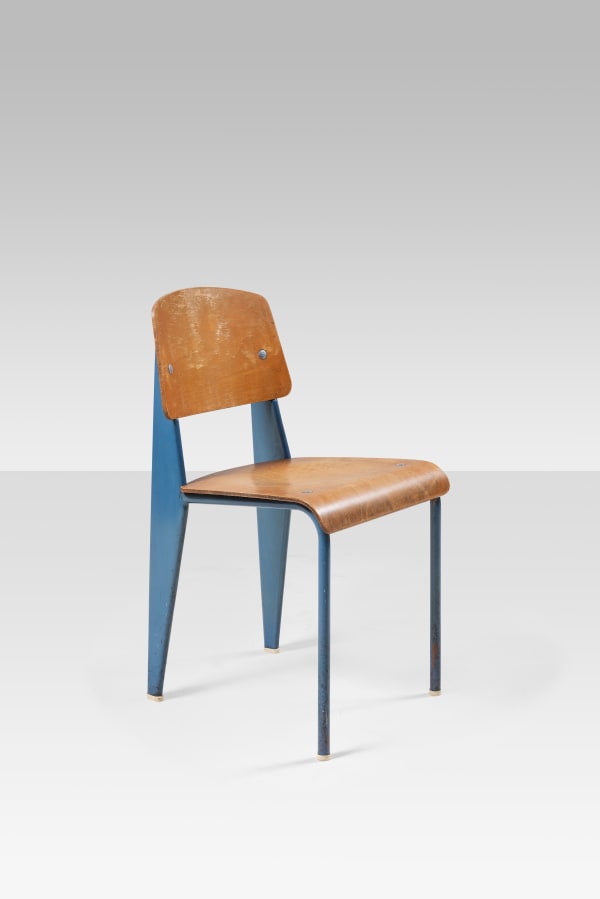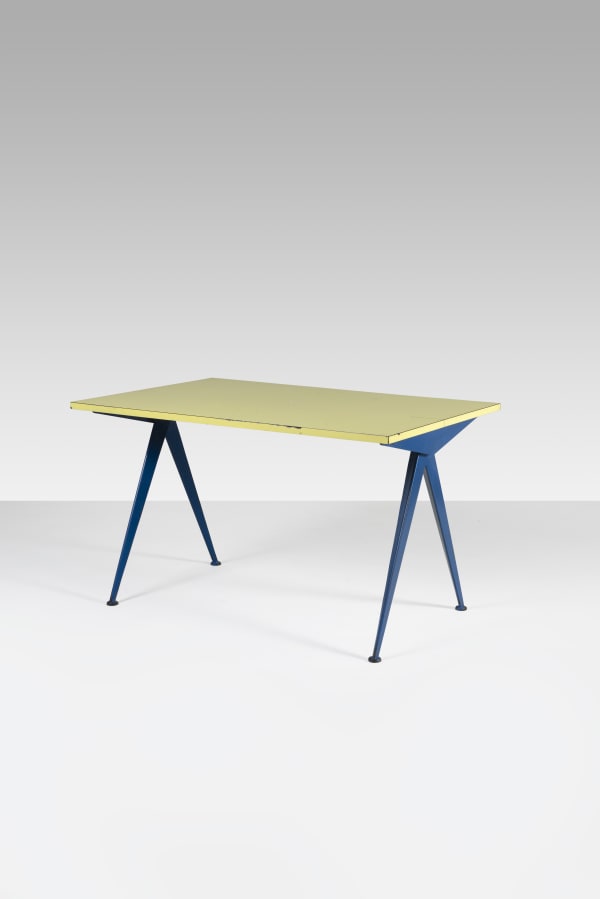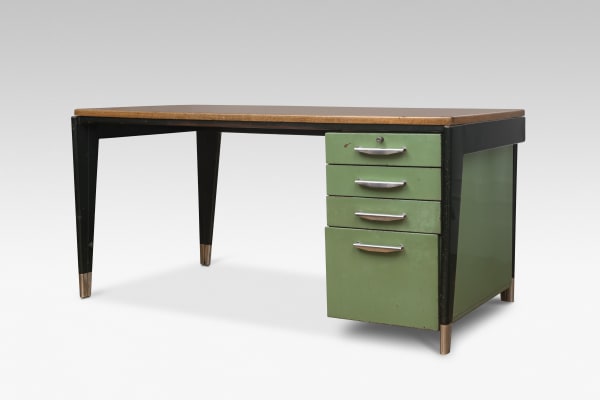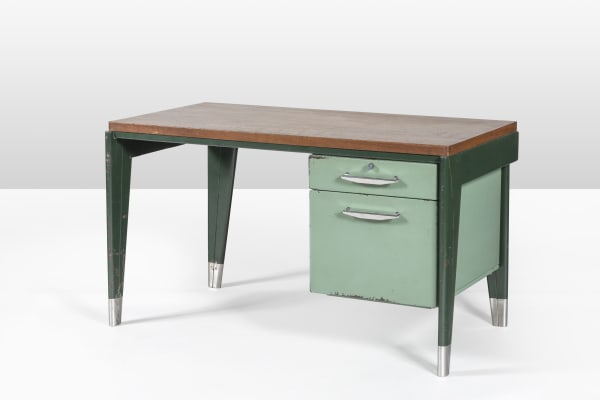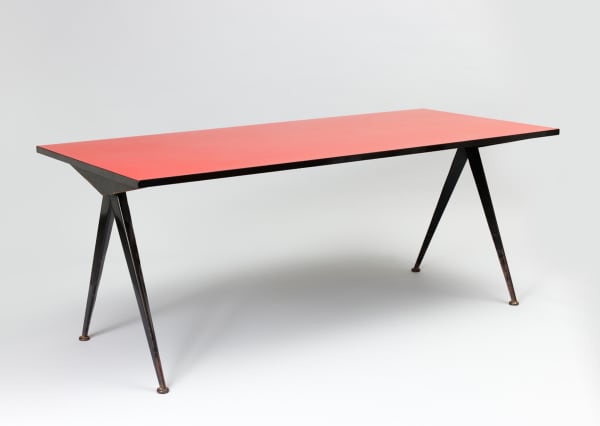Jean Prouvé France, 1901-1984
-
 Curved 'Compas' desk, ca. 1953
Curved 'Compas' desk, ca. 1953 -
 Lit Antony, 1954
Lit Antony, 1954 -
 Armchair Cité, 1930Sold
Armchair Cité, 1930Sold -
 Chaise Métropole N° 305 - black, c. 1950Sold
Chaise Métropole N° 305 - black, c. 1950Sold -
 Chaise Métropole N° 305 - blue, c. 1950Sold
Chaise Métropole N° 305 - blue, c. 1950Sold -
 Chaise Métropole N° 305 - brown, c. 1950Sold
Chaise Métropole N° 305 - brown, c. 1950Sold -
 Chaise Métropole N° 305 - grey, c. 1950Sold
Chaise Métropole N° 305 - grey, c. 1950Sold -
 Compass desk (Marcoule model), 1953Sold
Compass desk (Marcoule model), 1953Sold -
 Desk, 1948
Desk, 1948 -
 Desk, 1953Sold
Desk, 1953Sold -
 Desk, 1946Sold
Desk, 1946Sold -
 Gueridon, 1950Sold
Gueridon, 1950Sold -
 Metropole chair, 1952Sold
Metropole chair, 1952Sold -
 Table , ca. 1950Sold
Table , ca. 1950Sold
Jean Prouvé (1901–1984) was one of the twentieth century’s pioneer architects. He explored all of metal’s technical resources and employed the wrought-iron work in constructive applications of bent sheet metal. Believing that ‘there is no difference between building a piece of furniture and a house’, Prouvé developed a ‘constructive thinking’ based on the logic of production and functionality that generated a clean aesthetic of everything, embracing the doctrine of the Union of Modern Artists, of which he was a founding member, along with Le Corbusier, Pierre Jeanneret and Charlotte Perriand.
Prouvé was born in Nancy, where he trained as an artisan blacksmith. His intimate knowledge of metal remained the foundation of his work and career. He started with the realization of entrance gates, staircases, railings and canopies. In 1924 he founded his first workshop, ‘Jean Prouvé, ferronier d'art’. That same year he designed his first furniture using steel sheets, a material that makes it possible to obtain a ‘hollow’, adding resistance to the furniture structure. The use of this metal is found in most of his furniture throughout his career. Prouvé also frequently employed aluminium, used in the form of bent sheet metal or castings.
Very concerned with the social and economic issues of his country, Prouvé always designed with a social ideal in mind, working on projects such as administrations and schools (the University of Nancy in 1932 and the Cité Universitaire d’Antony in 1954). Jean Prouvé contributed considerably to the reconstruction and urbanization of France after the war. Gallery Steph Simon began distributing his furniture in 1956.
His work is included in collections worldwide, such as the Centre Georges Pompidou in Paris and MoMA in New York.




